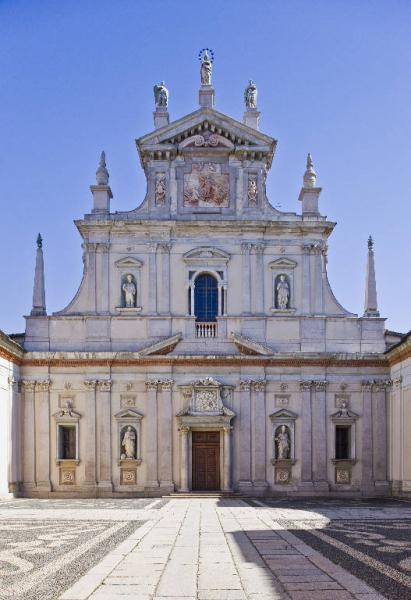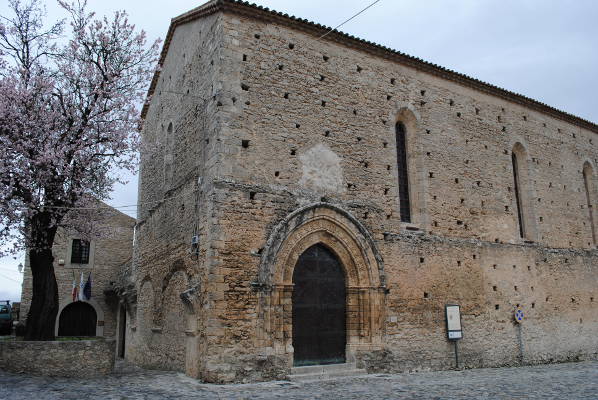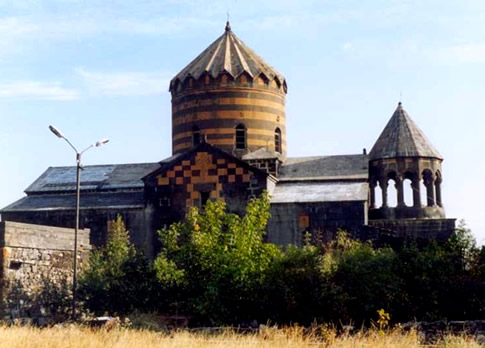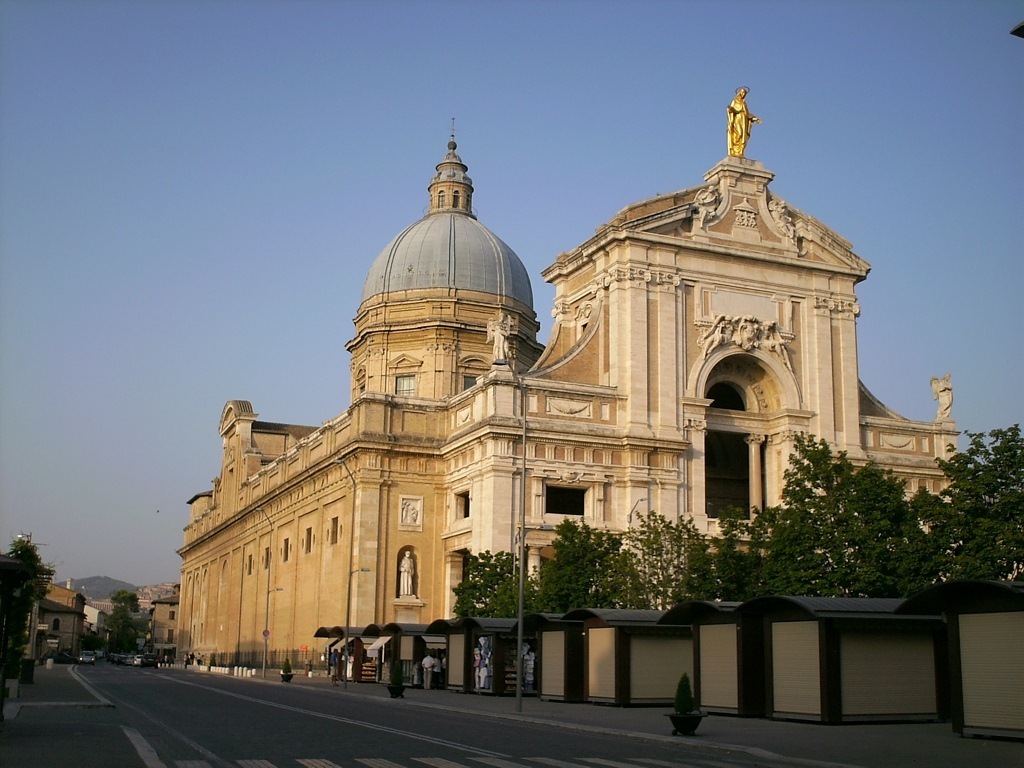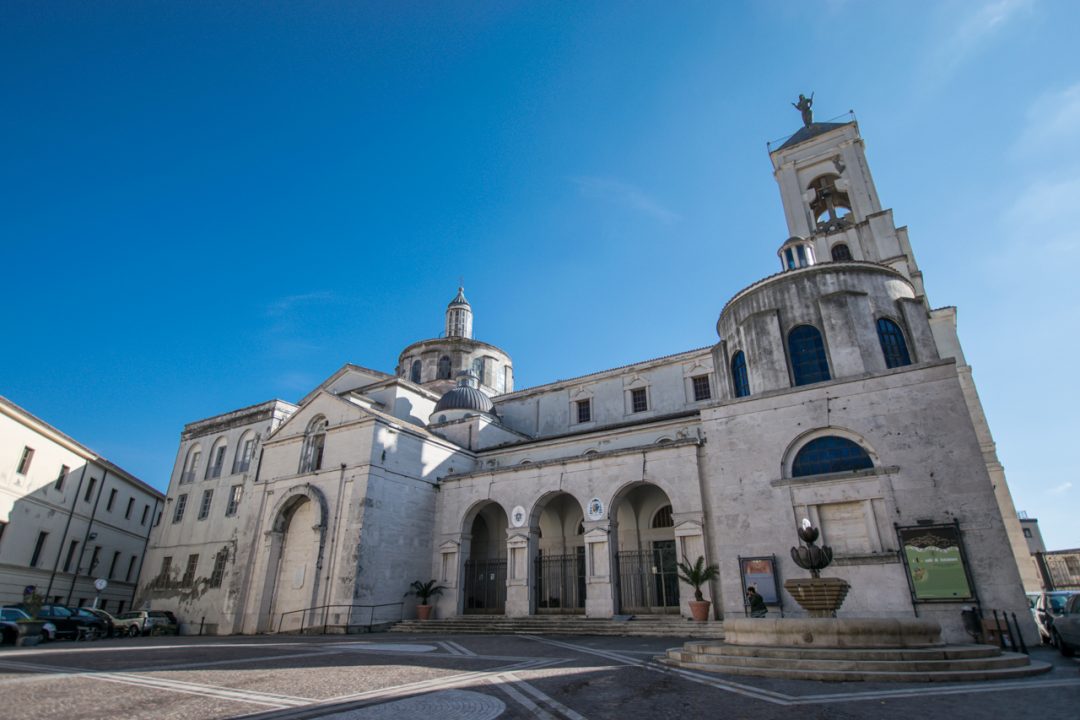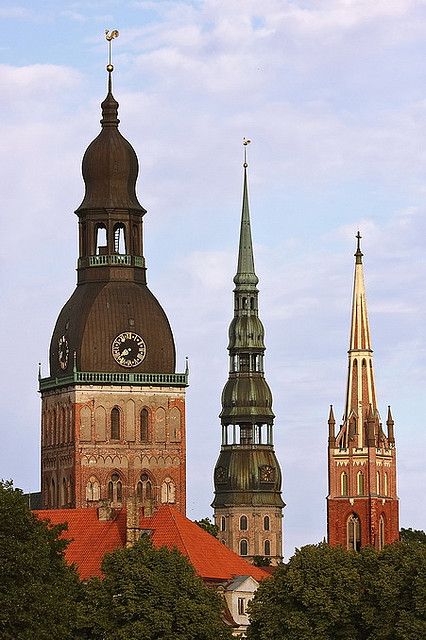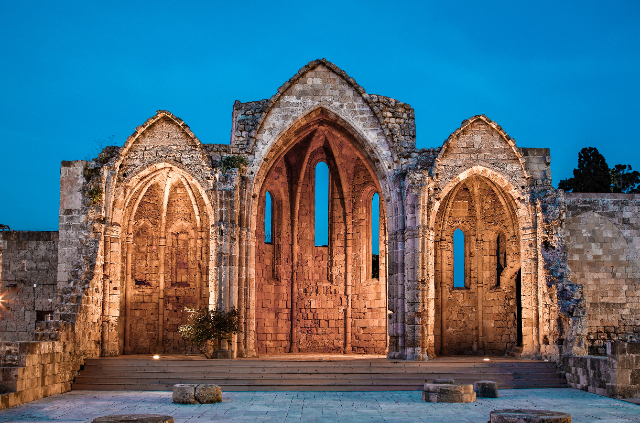In Garegnano, once a small village in the countryside west of Milan, today a district located between the Maggiore Cemetery and the Lakes freeway, stands the Carthusian monastery of the same name. Of the original Gothic forms of the monastery founded in 1349 by Archbishop Giovanni Visconti to accommodate the Carthusian monks, little has remained after the expansion started at the end of the sixteenth century, perhaps designed by Pellegrino Tibaldi.
It is an important building in the history of Milanese art both for the nobility of its forms and for the decorative apparatus with which it is covered. From the portal, through an atrium and an evocative elliptical vestibule enlivened by three exedras, you reach the church with its high front in three orders, with a facade enriched by architectural and decorative elements that enliven the surface. The interior, with a nave flanked by chapels, assumes the characteristic Carthusian planimetric form of a building with an inverted taumata plan, ending with an apsidal presbytery and crowned by an elegant octagonal lantern. The vault of the nave and the walls are embellished by frescoes in shades of gray and violet by Daniele Crespi (1629) that tell stories of Carthusians and St. Brunone, founder of their order. It is said that Lord Byron, fascinated by the frescoes of Crespi, exclaimed: "he is a painter who knows how to make the dead speak.
In the presbytery the frescoes are instead by Simone Peterzano (1578 -1582) and in the chapter house and in the chapel on the right by Biagio Bellotti.
On the left there is the sacristy.
On the right of the temple there is a beautiful late sixteenth-century cloister.
